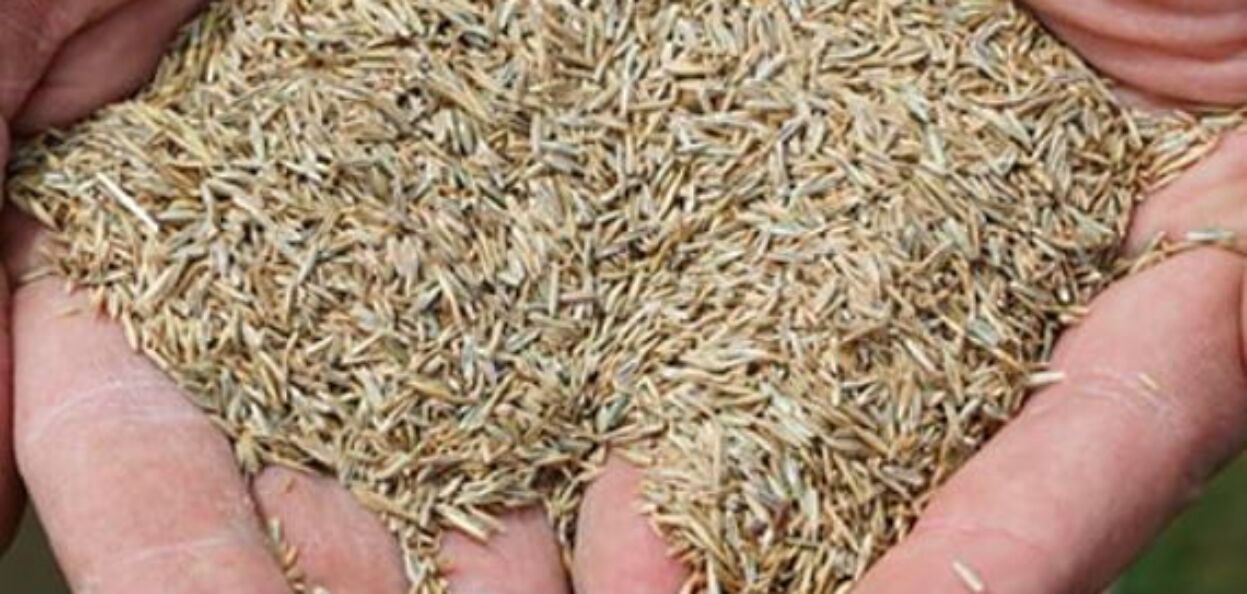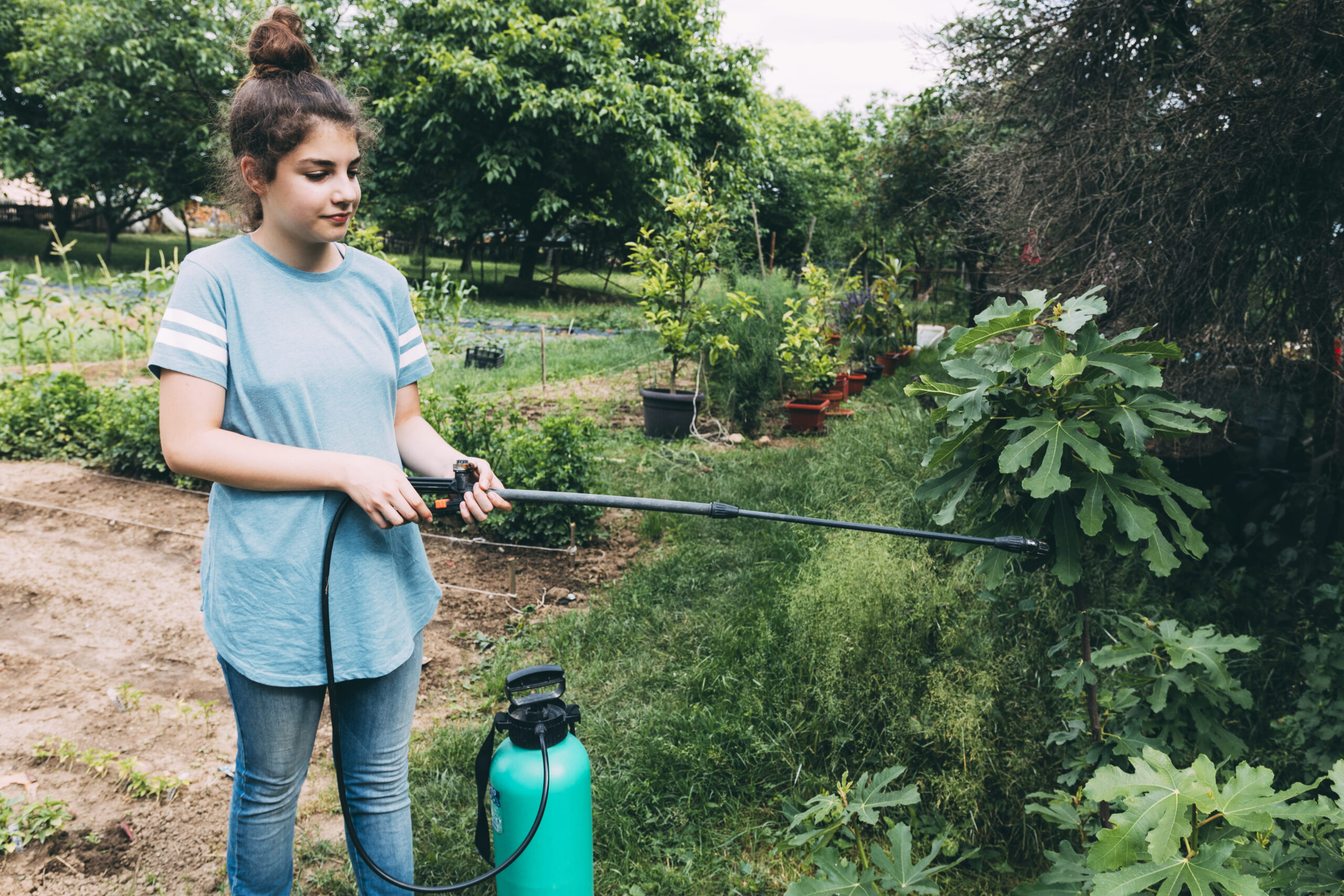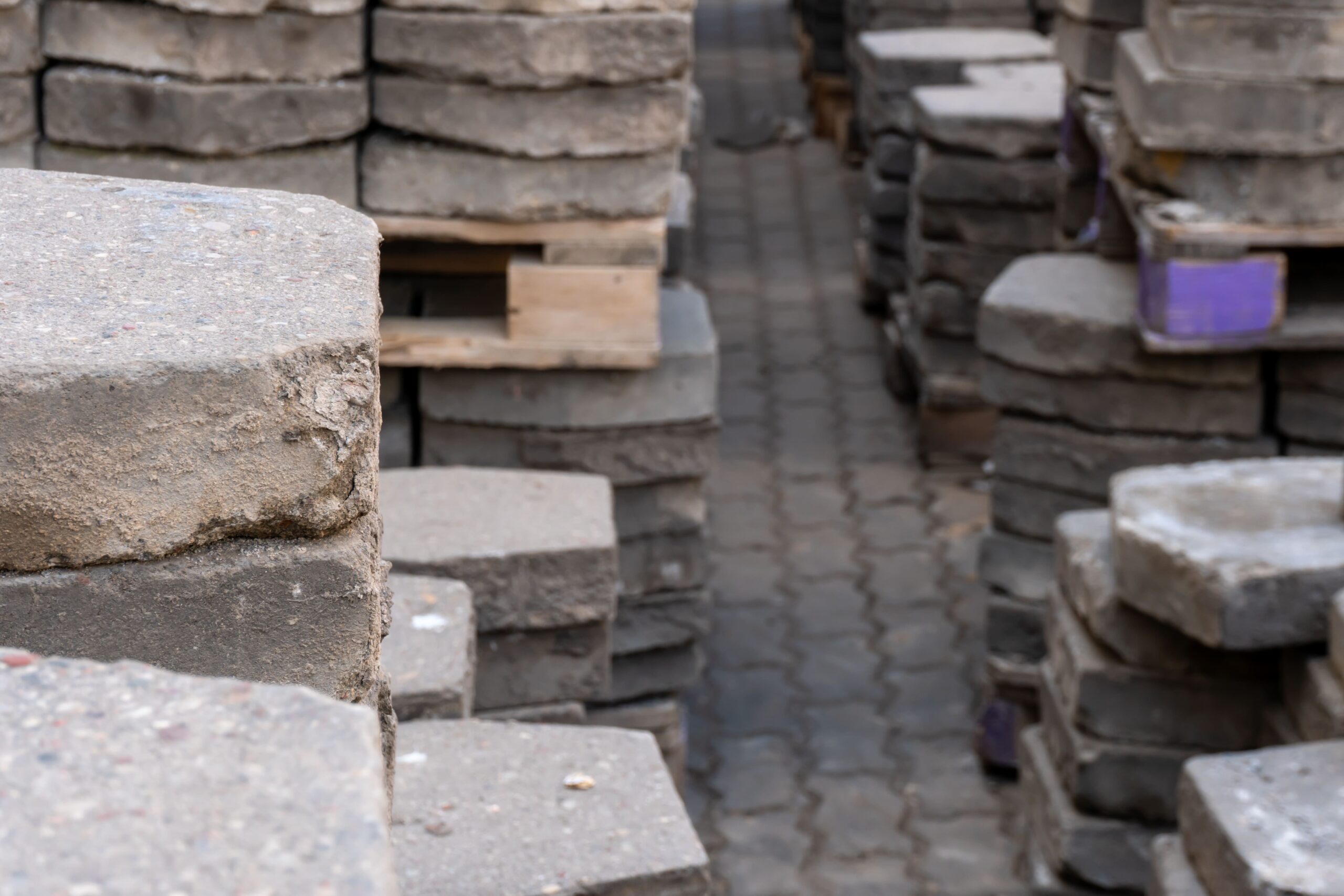Topdressing and Over-seeding Lawns in Ontario
What a great way to make a tired lawn lush again. And a lot less expensive than sodding.
Maintaining a lush, healthy lawn in Ontario, requires understanding the region’s climate, soil conditions, and seasonal changes. Two critical practices for lawn care in this area are topdressing and over-seeding. These techniques, when used together, can rejuvenate a tired lawn, improve soil health, and ensure a dense, green lawn that resists weeds and disease.
We are now entering the season of lawn renewal!
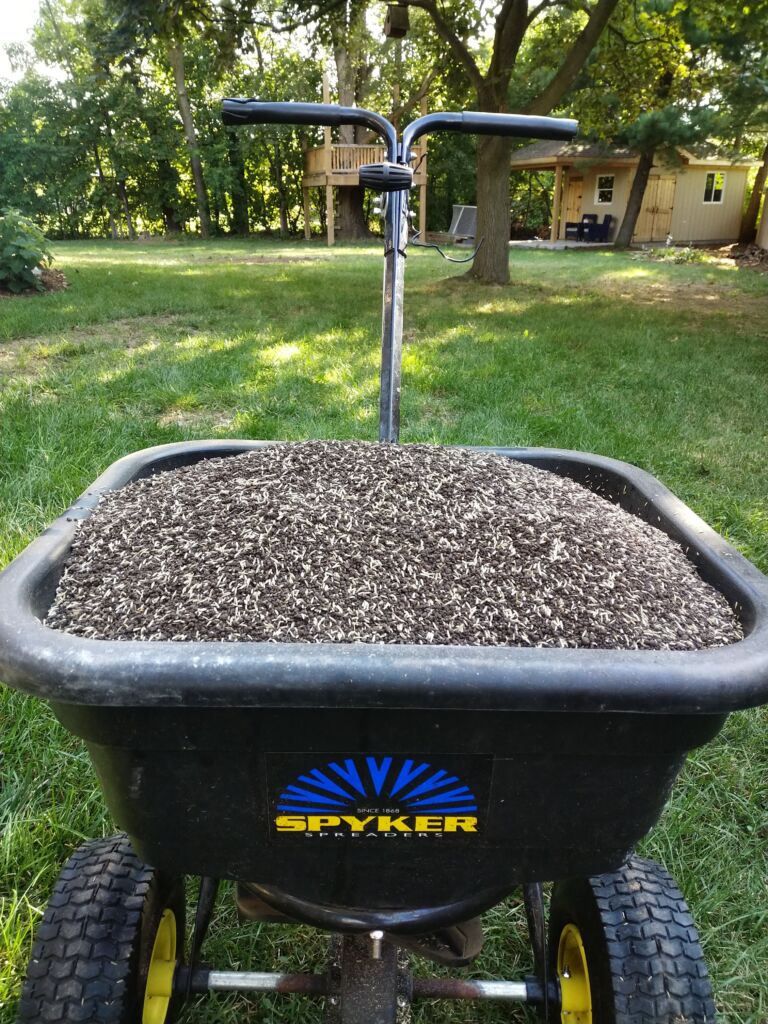
Understanding Topdressing
Topdressing involves applying a thin layer of soil or compost over the lawn surface. This practice has several benefits:
- Soil Improvement: Topdressing adds organic matter to the soil, enhancing its structure and fertility. In Ontario, where soils can vary from heavy clay to sandy loam, improving soil structure is crucial for healthy grass growth. It is very important to know the texture of the soil underneath you lawn.
- Thatch Reduction: Thatch, a layer of dead grass and roots, can build up over time, impeding water and nutrient absorption. Topdressing helps break down thatch by promoting microbial activity. It is important to understand thatch is a natural and beneficial part of your lawn. Excess thatch is what can become a problem.
- Leveling the Lawn: Over time, lawns can develop low spots or become uneven. Topdressing helps to level these areas, making the lawn more aesthetically pleasing and easier to mow.
- Enhanced Root Development: A thin layer of nutrient-rich topdressing material encourages grass roots to grow deeper and stronger, improving drought resistance and overall lawn health.
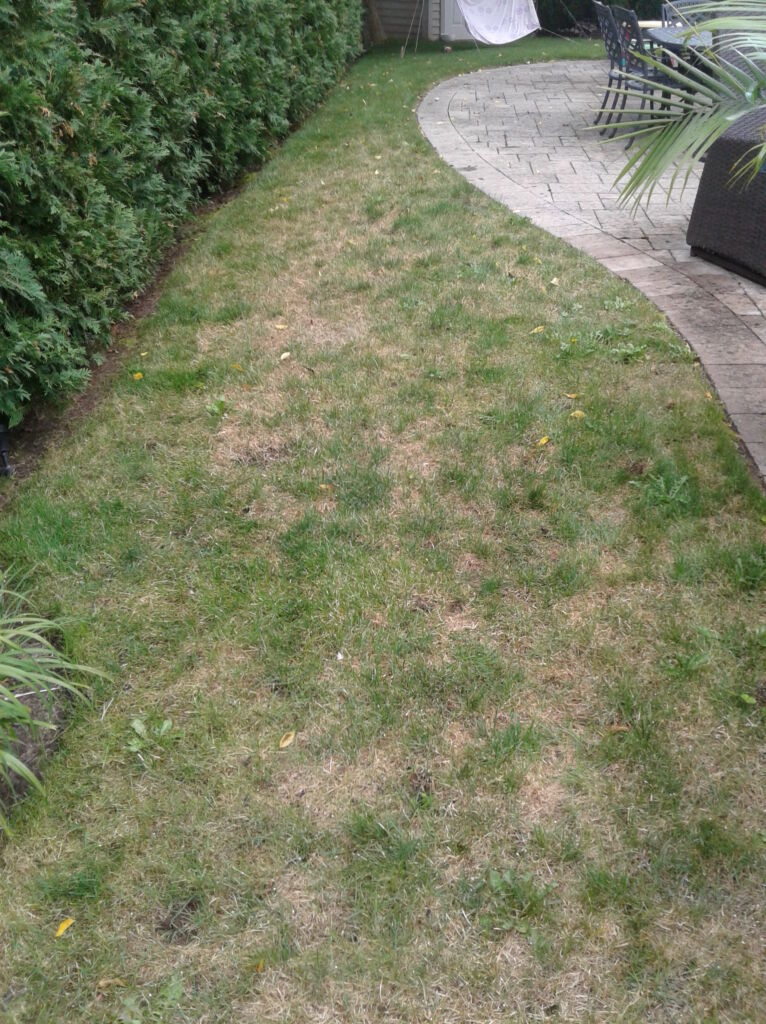
A tired lawn BEGGING to be rejuvenated.
What Materials do we use for Topdressing
Choosing the right material for topdressing is essential. Common materials include:
- Compost: Rich in nutrients and organic matter, compost is ideal for most lawns. It helps improve soil structure and supports beneficial microorganisms. We primarily use compost or composted manure for topdressing. We also use pelletized compost as a “quick fix” on relatively healthy lawns. The pelletized compost bring all of the micro nutrients and organic matter but without the bulk that “straight” compost has.
- Sand: Used primarily on heavy clay soils to improve drainage, sand should be mixed with compost to avoid compacting the soil. Adding only sand as a topdressing can seriously damage the soil. You may have noticed golf courses topdressing using only sand but gold courses often are built using a manufactured, sand based media.
- Topsoil: We use topsoil if we are trying to level out areas of a lawn. It is very important to use the same type of soil the lawn is growing on. For example, here in Milton, when using topsoil for topdressing, we use a screened clay soil.
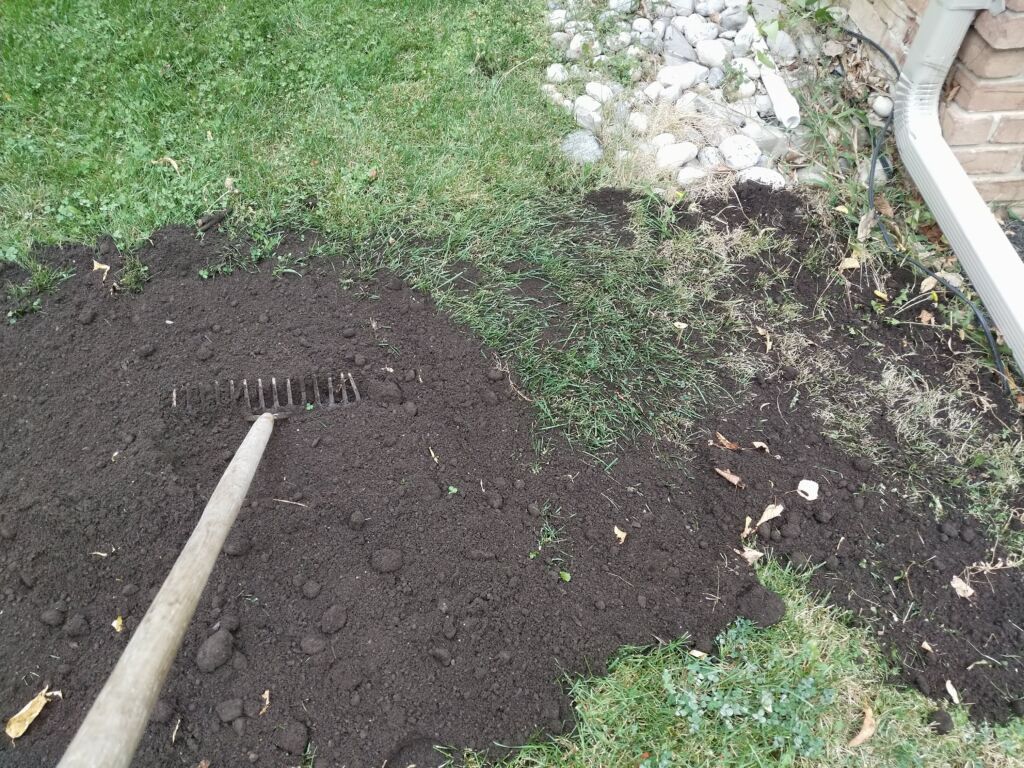
The Topdressing Process
- Timing: In Ontario, the ideal time to topdress is in early fall the second best time is spring when the grass is actively growing. Avoid topdressing during extreme heat or drought.
- Preparation: Mow the lawn to a shorter height than usual and remove any debris. Aerate the lawn if necessary to alleviate compaction and improve the movement of water and nutrients. Do not aerate unless the soil is compacted.
- Application: Spread a thin layer (approximately 1/4 inch) of topdressing material evenly over the lawn. Use a fan (leaf) rake work the material into the grass, ensuring it reaches the soil surface.
- Watering: If you are not over-seeding, water the lawn thoroughly after topdressing to help the material settle and integrate with the existing soil.
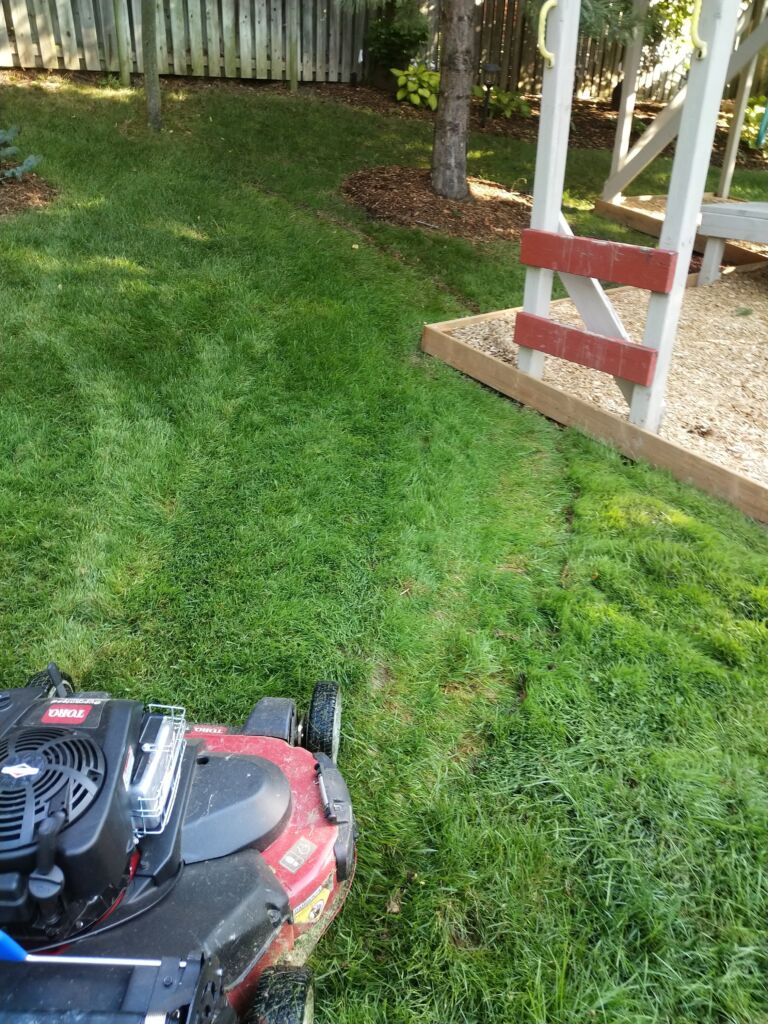
Understanding Over-seeding
Over-seeding is the process of spreading grass seed over an existing lawn to fill in bare spots, improve turf density, change the species of grass in the lawn and enhance the lawn’s overall appearance. In Ontario, over-seeding is particularly important due to the region’s cold winters and warm summers, which can stress grass and create thinning areas.
Benefits of Over-seeding
- Changing Lawn Species: Most sod grown in Ontario is predominantly Kentucky Bluegrass. This species needs a full sun location to thrive. Many lawns are growing in a partial to full shade location. We can over-seed using grass species that are suitable for a shady location changing the grass population over time.
- Improved Lawn Density: Adding new grass seed increases turf density, making the lawn thicker and more robust.
- Enhanced Appearance: Over-seeding can introduce newer, improved grass varieties that are more disease-resistant and visually appealing.
- Weed Prevention: A dense lawn is more effective at crowding out weeds, reducing the need for herbicides.
- Disease and Pest Resistance: New grass varieties can offer better resistance to local diseases and pests, contributing to a healthier lawn.
Choosing the Right Grass Seed
Selecting the appropriate grass seed is crucial for successful over-seeding. In Ontario, cool-season grasses are the most suitable. Some popular choices include:
- Kentucky Bluegrass: Known for its fine texture and deep green color, Kentucky Bluegrass is a popular choice for Ontario lawns. It spreads well and recovers quickly from damage.
- Perennial Ryegrass: This grass germinates quickly and provides rapid cover, making it ideal for over-seeding. It is also wear-resistant and tolerates a range of soil conditions. If you have active kids who damage your lawn playing, this is the grass for you.
- Fescues: Fine fescues, such as creeping red fescue and chewings fescue, are shade-tolerant and require less water and fertilizer than other grass types.

The Over-seeding Process
- Timing: The optimal time for over-seeding in Ontario is early fall, from mid August to early October. This timing allows seeds to germinate and establish before winter and thrive in the cooler temperatures of spring.
- Preparation: Mow the lawn to a low height and remove any debris. Aerate the lawn, if necessary.
- Topdressing: Apply a thin layer of compost or topsoil over the seeds to protect them and enhance germination. This step also integrates over-seeding with topdressing, providing dual benefits.
- Seeding: Use a broadcast spreader to distribute the grass seed evenly across the lawn. For best results, use a mix of grass seeds to ensure diversity and resilience.
- Raking: We use a fan rake to ensure the grass seed has good contact with the top-dress material. Some people may roll the lawn using an empty roller.
- Watering: Keep the soil consistently moist until the seeds germinate and the new grass is established. This may require watering lightly several times a day initially.
Combining Topdressing and Over-seeding
Combining topdressing and over-seeding maximizes the benefits of both practices. The topdressing material provides a nutrient-rich bed for the new seeds, improving germination rates and seedling vigor. Additionally, the organic matter in the topdressing enhances soil health, supporting both existing grass and new seedlings.
This is the process we suggest for most of our clients.
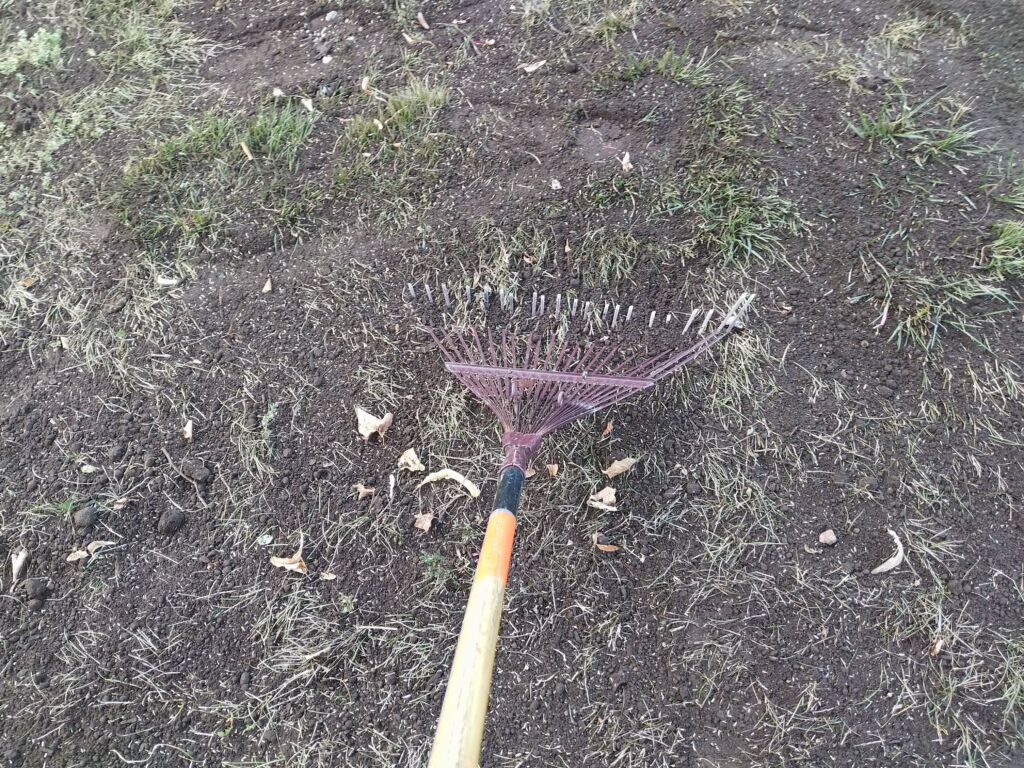
Maintenance After Topdressing and Over-seeding
- Watering: Consistent moisture is critical for seed germination and root establishment. Water the lawn lightly and frequently until the new grass is well-germinated. Once the new grass is established water once a week applying about 1” of water.
- Mowing: Avoid mowing until the new grass reaches a height of 3 to 4 inches. Then, mow with a sharp blade to prevent damaging the young grass.
- Fertilizing: Once the new grass is established, apply a balanced fertilizer to promote healthy growth. Avoid over-fertilizing, as this can lead to excessive growth and thatch buildup.
- Weed Control: Minimize the use of herbicides during the establishment phase, as they can harm new grass seedlings. Hand-pull any weeds that emerge until the lawn is mature enough to tolerate weed control treatments.
Topdressing and over-seeding can be an essential lawn care practices for homeowners in Ontario, Canada, seeking to maintain a healthy and attractive lawn. These techniques improve soil health, enhance lawn density, and increase resistance to weeds, pests, and diseases.
By understanding the specific needs of Ontario’s climate and soil, homeowners can effectively implement these practices to achieve a lush, green lawn that enhances the beauty and value of their property. Regular maintenance, including proper watering, mowing, and fertilizing, ensures the long-term success of topdressing and over-seeding efforts, resulting in a resilient and thriving lawn.
As always, if you have any questions please reach out to us!

